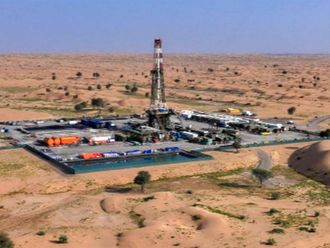Last week, we launched the "Benchmarks Section" below, a facility which covers fund performance from Financial Express's colossal universe of tens of thousands of Collective Investment Vehicles. Or, funds to you and me.
This week, we make two significant changes based on two pressures: responses from Gulf News readers and the logic of statistics. Firstly, the launch results of last week were based on end-of-year results. Whilst useful in terms of trend following as up to the end of last year, and therefore useful as a starting point, they hide the most recent six-month "trend". This week, we move from end-of-year prices to "last price" as readers start to follow trends.
The last price in our work is based on prices as at June 10, i.e. the close of the UAE business week.
The second change is the more significant move from "annualised returns" to "overall returns". One reader pointed out the "uncertainty" of the annualised return philosophy versus the more "real" number of an overall growth figure.
Argument
The argument? Let's take the CAGR, or Compound Annual Growth Rate as an example. The CAGR is the year over year result. The problem with the resulting number over periods of, say five years is that the number is "imaginary". The CAGR is a conceptual number that describes the rate at which an investment would have grown if (and the big word is IF), the investment had grown at a steady rate.
The CAGR is a sort of "smoothing" number. As a result, an excellent CAGR performance can often hide huge volatility. The reality is that any proper performance due diligence requires two sets of numbers: risk (volatility); and performance. For now, our columns contain only the performance numbers.
We have therefore drifted toward measuring the more "real" overall growth. So, the question is: what difference does it make?
And, the answer is: well that depends on where you look! At the top of the equity performance trees; whilst the top performers are jostled around for position, many of the top annualised performers as at the end of last year retain their top position in terms of overall performance as of last week.
For example: Fortis Opportunities (US equities five-year performance), their annualised return as at end of 2009 was 9.34 per cent, yet retains top spot with a five year return of 50.39 per cent as at last week. Similarly, Scotiabank (US fixed interest — five years); M&G Recovery in the UK (equity five years); and UTI International- Indian equities (five years) where the annualised as at end 2009 was 30.41 per cent, and is replaced by the overall 258.58 per cent for five years as at June 10, yet both results are "first in class".
Interestingly, at the "top-of-the-tops" last week's top five-year "All funds" winner was Meridian Global Gold and Resources with a 37.2 per cent annualised return.
Again, the fund remains in first place with an overall return of 429.07 per cent for 5 years.
And where are the differences? Obviously, the one year statistics show greater change because last week's were end-of-year statistics being replaced by the last 52 week prices.
More significantly, the biggest area of change occurs within the emerging market. Last week, on an annualised basis, as at the end of 2009, the top performing global equity fund was MSDW Brazil at an annualised 32.92 per cent for the last 5 years as at the end of 2009.
The current top performing equity fund on an overall basis is: Fortis Flexi Fund China, with an overall return of 351.30 per cent for the last five years. It's a fund that ranks second overall, behind the Meridan Gold Fund in the "All Fund" last five-year performance list. The whole point is that performance figures serve as a useful guide for "benchmarking" individual performance.
Chasing "best performance" will always be problematical not just because it is difficult to predict, but because "best" will also be defined by different people in different ways.
Strategy
As stated last week, many of the world's most sought after funds aim for "second quartile" performance rather than "first quartile", because they do not wish to take too much risk, which many of the top performing results will imply.
The usefulness of the figures below therefore lie in comparing the best results and worst results against specific benchmarks; in looking at the risk-range in particular areas, and in the comparative performance of one area/asset against another.
The writer is Chairman of Mondial Financial Partners.












